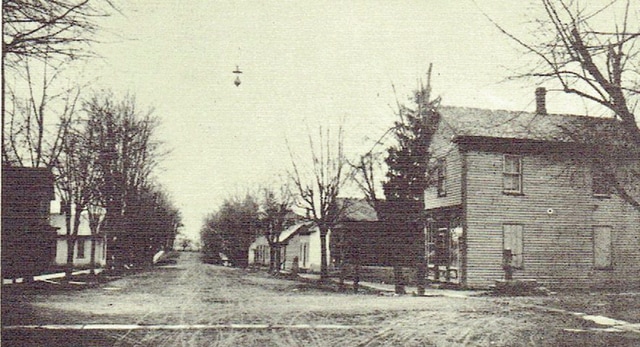

The village of Highland will celebrate its bicentennial in August with a church rededication and Ghost Walk. Then in September the community will host a two-day festival. In honor of this celebration, I am reviving the Time Travels column. Hello old friends and welcome new ones.
The village of Highland is located about 10 miles north of Hillsboro on SR 72 and SR 28. John Connor laid out the town in September 1816.
Tradition says Connor named the town after Lexington, Ky. Postal conflicts arose with a town in Perry County also called New Lexington. The local name was changed to honor the county’s name of Highland and because of the village’s high elevation. It sits on the crest of a rising hill on Lee’s Creek. The community started out with 10 families in 1817. By 1840, the population had reached 151 and grew to 242 people in 1870.
Many of the early settlers were from Virginia, Kentucky and the Carolinas.
John Connor built the first house. David Terrell became the first merchant and postmaster. Pleasant Terrell was a brick mason by trade. In 1830, he built and operated the first mill. It was located on the south edge of the village.
After several owners, James Earl arrived in 1878 to run the mill. His son Orland was 10years old. By 1890, James Earl Jr. and his brother Orland ran the mill. The mill is reported to have produced daily 40 barrels of “Auora” flour. James left the partnership in 1900. Orland carried on and produced whole wheat “Victor” flour until its closing.
In Orland’s recollections, which were published in “Through the Years: a History of New Lexington-Highland,” he writes about running errands and holding the sacks until he was 15. Then he could be trusted to watch the old corn burrs. By 18, Orland could operate the mill on his own. The mill ran with turbine water wheel under a 10-foot head. Orland writes that they were able to grind flour “suitable for the kitchen” and meet the competition. Competition existed. Orland recalled, “Thirty mills inside a 10-mill circle from this spot that were at one time or another competitors. Of theses 30, 18 were steam and 12 were water driven.”
Progress eventually closed the mill. Orland recalled, even the farmer seems to prefer “city-baked bread … especially when it was brought to their door by the motor van of the commercial baker.”
Next time read about the village of Highland’s hotels and other businesses.
Information is taken from “Time Travels: 200 Years of Highland County History” by Charlotte Pack and “Through the Years: A History of New Lexington-Highland” by the Heritage Committee of the 1976 Bicentennial Commission.
Charlotte Pack is a local author and historian. She calls her column Time Travels.



